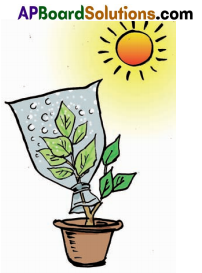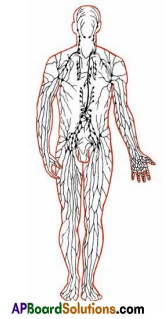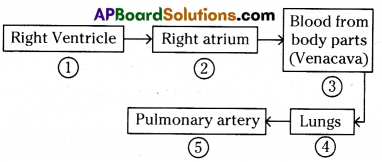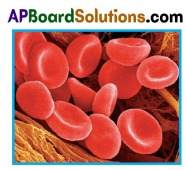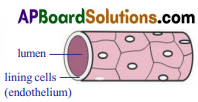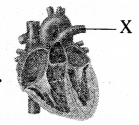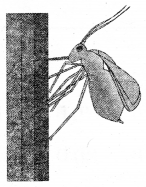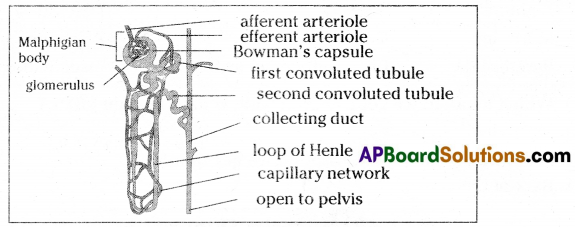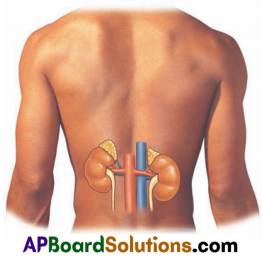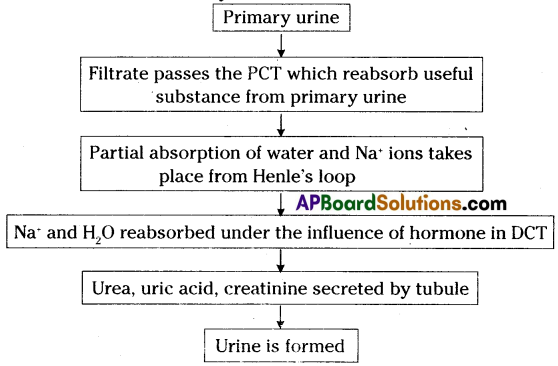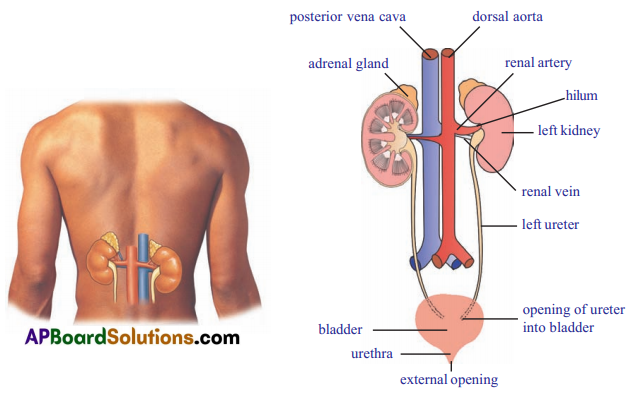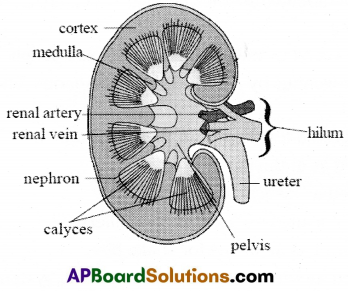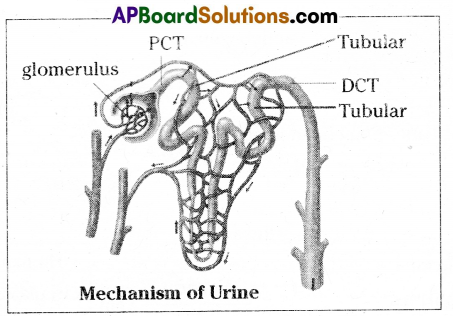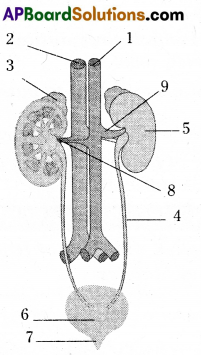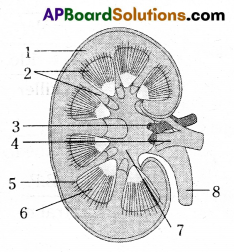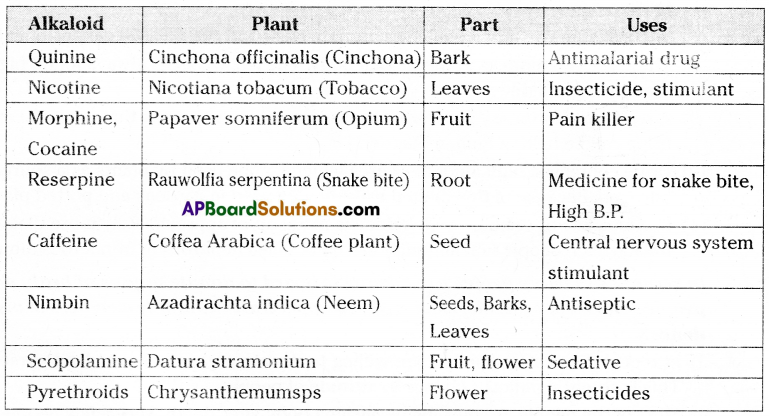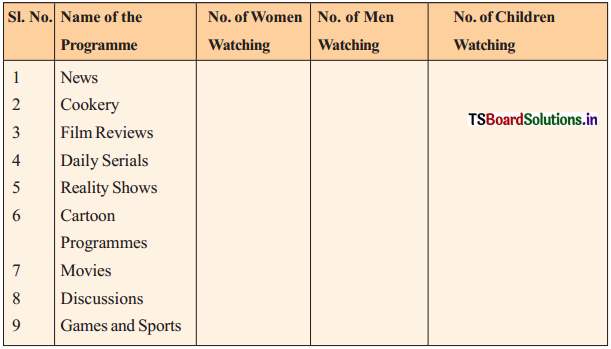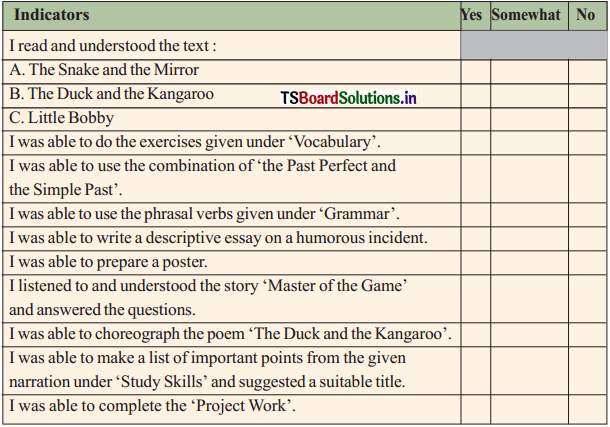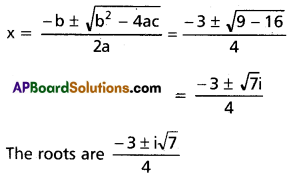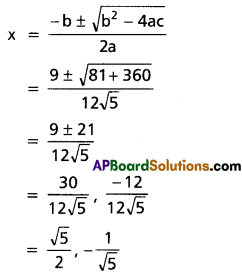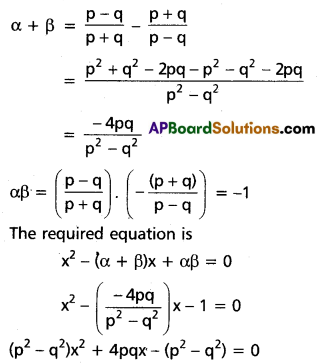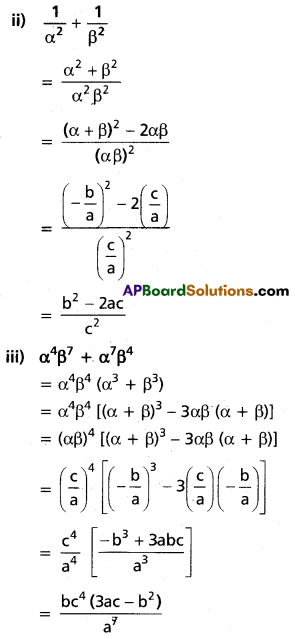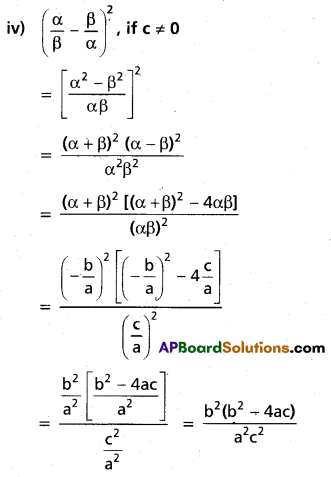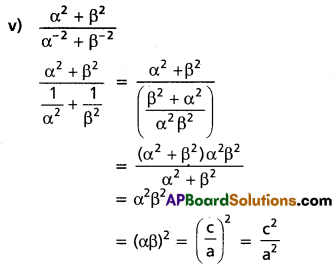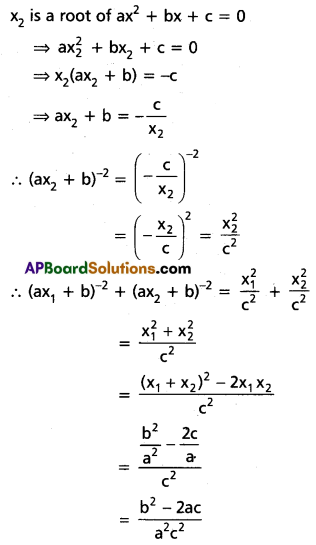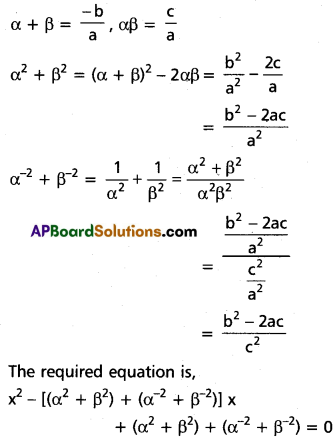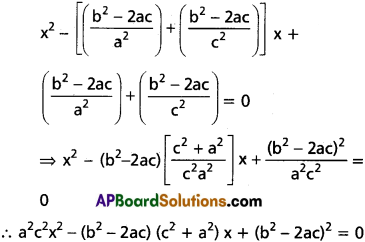Andhra Pradesh BIEAP AP Inter 2nd Year English Study Material Intermediate 2nd Year English Grammar Reading Comprehension Questions and Answers.
AP Intermediate 2nd Year English Grammar Reading Comprehension
Reading is a skill many people take for granted, but the act of reading and properly comprehending a text is a complex and interactive process. It requires several different brain functions to work together and most often requires one to puzzle through multiple layers of context and meaning.
Reading comprehension is the understanding of what a particular text means and the ideas the author is attempting to convey, both textual and subtextual. In order to read any text, your brain must process not only the literal words of the piece, but also their relationship with one another, the context behind the words, how subtle language and vocabulary usage can impact emotion and meaning behind the text, and how the text comes together as a larger, coherent whole.
Read the following passages and answer the questions.
1. Your Mind Or Mind’s You
The mind is a superb instrument if used rightly. Used wrongly, however, it becomes destructive. To put it more accurately, it is not so much that you use your mind wrongly – you usually don’t use it at all. It uses you. This is a disease. You believe that you are your mind. That is a delusion. The instrument has taken you over.
Just because you solve a crossword puzzle or build an atombomb doesn’t mean that you use your mind. Thinking has become a disease. Just as dogs love to chew bones, the mind loves to get its teeth into problems. That’s why it does crossword puzzles and builds atombombs. You have no interest in either. Let me ask this : can you be free of your mind whenever you want to ? Have you found the off button ?
Then the mind is using you. You are unconsciously identified with it, so you don’t even know that you are its slave.
Questions:
Question 1.
What is the instrument that is being talked about in the passage ?
Answer:
The mind.

Question 2.
According to the passage how do we say that we use our mind ?
Answer:
solve a crossword puzzle or build an atombomb.
Question 3.
“Get your teeth into problems” means :
a) Chewing the problem With teeth.
b) You like it because it is interesting.
c) Using the brain to chew the problems.
Answer:
b) You like it because it is interesting.
Question 4.
Find out the word from the passage which means ‘false belief.
Answer:
delusion.
Question 5.
Write the noun form of ‘destructive’.
Answer:
destruction
2. The Treasure Within
A beggar had been sitting by the side of a road for over thirty years. One day a stranger walked by. “Spare some change?” mumbled the beggar, mechanically holding out his baseball cap. “I have nothing to give you,” said the stranger. Then he asked : “What’s that you are sitting on ?”Nothing,” replied the beggar. “Just an old box. I have been sitting on it for as long as I can remember.” The stranger asked, “Have you ever looked inside ?” “No,” said the beggar. “What’s the point? There’s nothing in there.” “Have a look inside,” insisted the stranger. The beggar managed to pry open the lid. With-astonishment, disbelief and elation, he saw that the box was filled with gold.
This is what happens to all of us. We need a stranger to tell us to look inside. Not inside any box, as in the parable, but inside yourself. We are always looking outside for scraps of pleasure or fulfilment, for validation, security, love, strength while we have an infinite treasure within.
Questions :
Question 1.
What is the treasure within according to the passage ?
Answer:
Pleasure or fulfilment, validation, security, love, strength.
Question 2.
Why is everyone compared to ‘a beggar on the box’ in this passage ?
Answer:
Just like the beggar in the passage me never opened the treasure box until told, we never look inside ourselves.

Question 3.
What does the word .’pry’ in the passage mean ?
a) Try
b) To look closely and curiously.
c) To find a treasure.
Answer:
a) Try
Question 4.
What is the antonym of the word ‘elation’ ?
Answer:
Depression.
Question 5.
Where can we find the treasure of pleasure, fulfilment, security, love and strength ?
Answer:
Inside ourselves/within ourselves.
3. Endangered Species
In 2008, the polar bear was placed on the endangered species list. According to the USA’s Endangered Species Act, an endangered species is an animal, plant or any other kind of wildlife that is likely to face extinction in its natural habitat.
The polar bear is the first animal that has been classified as endangered primarily due to global warming. Global warming is a form of climate change caused by increased levels of carbondioxide and other greenhouse gases that become trapped in the atmosphere. The polar bear’s habitat is more vulnerable to global warming than many other species. Polar bears live mainly on the sea ice in the Arctic. This is where they hunt for fish and build up fat reserves. When the ice melts many polar bears move to land and live off their stored fat. In the Arctic, global warming is causing the ice to melt slightly earlier and form slightly later. This results in a shorter feeding season for the polar bear. Some risk their lives to find ice. If they have to swim too far they will drown from exhaustion and hunger.
Questions:
Question 1.
What is the endangered species according to the USA’s Endangered Species Act ?
Answer:
An endangered species is an animal, plant or any other kind of wildlife that is likely to face extinction in its natural habitat.
Question 2.
What is global warming ?
Answer:
Global warming is a form of climate change caused by increased levels of carbondioxide and other green-house gases that become trapped in the atmosphere.
Question 3.
Pick the word/phrase from the passage which means ‘to survive/to depend’.
Answer:
Live off.
Question 4.
What is the result of the ice melting slightly earlier and form of slightly later ?
Answer:
This results in a shorter feeding season for the polar bear.

Question 5.
State true or false.
Polar bears are an endangered species because their habitat is affected by global warming.
Answer:
True.
4. The Eye
Light enters the eye by refracting, or bending, as it passes through the cornea. Light rays then pass through the opening into the eye known as the pupil. The pupil size is controlled by a muscle known as the iris. The pupil becomes smaller when in bright area and larger in dark area. After leaving the pupil, light rays are refracted once again as they pass through the convex lens of eye. Light rays continue travelling through a jelly-like material called the vitreous humor. An upside down image is formed on the back of the eye known as the retina. Cone cells on the retina interpret the colour of the image and rod cells interpret the black and white colours. Lastly the image is taken to the brain for the image to be seen correctly.
Questions :
Question 1.
What is the opening into the eye called ?
Answer:
The pupil
Question 2.
What is the muscle that controls the size of the pupil ?
Answer:
The iris
Question 3.
State true or false’:
The pupil becomes smaller in dark areas.
Answer:
False
Question 4.
Write the antonym of ‘convex’.
Answer:
Concave
Question 5.
Where does an upside down image form in the eye ?
Answer:
The retina
5. India – A Developing Nation
India was once considered the land of knowledge and enlightenment. In ancient times scholars from all over Asia and Europe used to flock to Taxila, Nalanda and other Indian centres of learning. Apart from arts, culture, philosophy and religion, these scholars came to study medicine, law, and martial sciences. But despite having a vastly expanded university system and historical advances, modem India has yet to provide international or even regional leadership in higher education. From the surrounding countries Asia and Africa, only a few students come to India for higher education.
The United States is by far the most successful country in attracting foreign students. But other countries such as Australia, Canada, and Britain also aggressively market their universities abroad through their education counselling services and recruitment fairs with the active co-operation of their diplomatic missions abroad.
Likewise, India should also capitalise on the advantages offered by its higher education institutions, market Indian universities abroad and facilitate the entry of foreign students into them. The revenue from foreign students can be used to ease the financial crunch faced by Indian universities, improve academic facilities and subsidise the cost of educating Indian students.
Questions:
Question 1.
What were the two famous universities in ancient India ?
Answer:
Taxila, Nalanda.
Question 2.
Name any two topics taught at the ancient universities in India.
Answer:
Arts, culture, philosophy, religion, medicine, law, martial sciences.
Question 3.
Which is the most successful country in attracting foreign students at present ?
Answer:
The United States of America.

Question 4.
Academic facilities in India can be developed with —–.
Answer:
The revenue from foreign students.
Question 5.
Write the noun form of the word ‘aggressively’.
Answer:
Aggression.
6. Healthy Food
Everyone eats food. Some people eat lots of fruit and vegetables, others may eat more or less meat, and some people may eat healthy, others may not. All of it is related to nutrition. Nutrition is the process of how people get the food that is needed to grow strong and healthy along with obtaining the necessary vitamins and nutrients to help bodies grow and function.
For children, good nutrition is especially important and it is necessary to eat healthy foods because kids are constantly growing. Good nutrition will lead to healthy bones and muscles, and without receiving the correct vitamins and nutrients while growing, a child will not grow as tall and as strong as they could be.
There are five main food groups that should be eaten each day. Eating a variety of foods in each group will lead to receiving most important nutrients to remain strong and healthy. The first food group includes grains such as cereals, rice, millets, breads, pastas etc. The second group is dairy, which includes milk, yogurt, cheese, butter and other dairy products. Apples, organges, grapes, bananas and many more are part of the fruits group. Of course, vegetables, such as1 beans, broccali, peas, carrots, com, leafs and many others is in its own food group as well. Finally, the fifth food group is protein, which can be found in beef, chicken, eggs, nuts, fish etc.
Questions:
Question 1.
What is nutrition ?
Answer:
Nutrition is the .process of how people get the food that is needed to grow strong and healthy along with obtaining the necessary vitamins and nutrients to help bodies grow and function.
Question 2.
What happens if children do not take good nutrition ?
Answer:
A child will not grow as tall and as strong as they could be.

Question 3.
How many food groups are there according to the passage ?
Answer:
5
Question 4.
Which of the following food groups do cheese, butter and yogurt belong to ?
a) Protein
b) Grains
c) Dairy
Answer:
c) Dairy
Question 5.
Name any three vegetables other than those in the passage.
Answer:
Cabbage, Potato, Cauliflower, Tomato, Brinjal, Bitter gourd, Snake gourd, Bottle gourd etc. (any three, options)
7. The Titanic
The Titanic, is in its watery grave. It is a great museum of human history and is at risk of being lost forever because of curious voyagers and treasure hunters, fears Bob Ballard, who first discovered the remains of the iconic ship in 1985. Famous fof discovering the great ship, Ballard is a former U.S. Navy Officer and a professor of oceanography. He presented a documentary called “Save the Titanic” on the 100th anniversary of the sinking of the great ship – April 15, 1912. The ship and her fate continue to fascinate, largely because of the horror that took place that night, with 1,522 passengers and crew losing their lives.”Ballard says, “The story has all the ingredients to make it timelessly fascinat¬ing. You have this revolutionary ship that’s unsinkable and carrying a cross section of people in society. And then it goes and hits an iceberg and sinks on its maiden journey.’ It’s an irony personified in history.”
Questions:
Question 1.
Who discovered the Titanic ship ?
Answer:
Bob Ballard.
Question 2.
When were the remains of the iconic ship discovered ?
Answer:
1985.
Question 3.
Why does the ship fascinate people even today ?
Answer:
Largely because of the horror that took place that night with 1522 passengers and crew losing their lives.
Question 4.
Pick out the word from the passage that means “being a first occurrence or event”.
Answer:
Maiden.
Question 5.
The Titanic sank on ——.
Answer:
5. April 15, 1912.
8. Homework At School
Homework has historically been given to students to reinforce what they learn at school, and ultimately to help them learn the subject better. However, too much homework is not helpful, and can be counter – productive. Excessive amounts of time spent on completing homework can take away the kid’s social life, family time, and limit their participation in sports or other activities. The amount of homework a teacher has to give to a student should be restricted.
Critically acclaimed author Tamim Ansary reports that since 1981, the amount of home-work given to an average sixth class child had increased by more than fifty percent. The new competition that emerged served as an incentive for schools to increase the volume of curriculum. Many teachers defend large amounts of homework, claiming that it helps students to face a world that is becoming increasingly competitive. However Dr. Kralovec, author The End of Homework’, argues that doing homework during school ha£ little or no effect on successful study skills of the students when they join college.
Questions :
Question 1.
What is the passage about ?
a) The advantages of homework
b) The disadvantages of homework
c) About a book – “Homework”.
Answer:
b) The disadvantages of homework

Question 2.
What does a student miss when he spends excessive amount of time on homework ?
Answer:
Social life, family time, participation in sports and other activities.
Question 3.
What is the aim of homework ?
Answer:
To reinforce what is learnt at school and ultimately help the students learn the subject better.
Question 4.
State true or false :
Dr. Kralovec defends the teachers who give large amounts of homeworks.
Answer:
False.
Question 5.
What do you think is the reason for increase of homework ?
Answer:
World is becoming increasingly competitive.
9. The Charminar
A man came to Hyderabad to attend a conference. He was visiting the city for the first time. He wanted to see the Charminar. So the next day after he attended the conference, he set out to visit the Charminar. He asked a police officer for directions to reach the place. The officer said, ‘Wait at this bus stop for the number 65 bus. It’ll take you right there.” He thanked the police officer and the officer drove off.
Three hours later the police officer returned to the same area to find the man still waiting at the game bus stop. Surprised, he got out of his car and asked the man, ‘Why are you still waiting ? Didn’t you get the bus ?”
The man replied, “Don’t worry officer, it won’t be late now. The 58th bus just went by !”
Questions:
Question 1.
Why did the man come to Hyderabad ?
Answer:
To attend a conference.
Question 2.
Write a synonym for ‘surprised’.
Answer:
Perplexed, bewildered.
Question 3.
Why was the man waiting at the bus stop ?
Answer:
To catch 65 number bus/to catch a bus to the Charminar.
Question 4.
Do you think the police officer gave the right directions to reach the Charminar.
Answer:
Yes.

Question 5.
State true or false.
The man was visiting the Charminar for the first time.
Answer:
True.
10. Genetic Modification
The controversy over genetically modified food continues unabated in the West. Genetic modification (GM) is the science by which the genetic material of a plant is altered, perhaps to make it more resistant to pests or killer weeds, or to enhance its nutritional value. Many food biotechnologists claim that GM will be a major contribution of science to mankind in the 21st century. On the other hand, large numbers of opponents, mainly in Europe claim that the benefits of GM are a myth propagated by multinational corporations to increase their profits, and that they pose health hazards they have therefore, called for governments to ban the sale of genetically-modified food.
The anti – GM campaign is quite effective in Europe, with several European member countries imposing a virtual ban for five years over genetically – modified food imports. Since the genetically modified food industry is particularly strong in the United States of America, the controversy also constitutes another chapter in the US-Europe skirmishes which have become particularly acerbic after the US invasion of Iraq.
Questions:
Question 1.
What is genetic modification ?
Answer:
Genetic modification (GM) is the science by which the genetic material of a plant is altered, perhaps to make it more resistant to pests or killer weeds, or to enhance its nutritional value.
Question 2.
What is the major contribution of science to mankind in the 21st century ?
Answer:
GM.
Question 3.
Find the word in the passage which means ‘to engage in a minor dispute’.
Answer:
Skirmishes.
Question 4.
Where is the anti – GM campaign effective ?
Answer:
In Europe.
Question 5.
Who called for governments to ban the sale of genetically – modified food ?
Answer:
Large number of opponents in Europe.
11. The Maneless Lion
Fifty feet away, three male lions lay by the road. They didn’t appear to have a hair on their heads. Noting the colour of their noses (leonine noses darken as they age, from pink to black), Craig estimated that they were six years old-young adults. “This is what we came to see. They are really maneless.” Craig, a professor at the University of Minnesota, is arguably the leading expert on the majestic Serengeti lion, whose head is mantled, in long, thick hair. He and Peyton West, a doctoral student who has been working with him in Tanzania, had never seen the Tsavo lions that live some 200 miles east of Serengeti. The scientists had partly suspected that the maneless male lions were adolescents mistaken for adults by amateur observers. Now they know better.
The Tsavo research expedition was mostly Peyton’s show. She had spent several years in Tanzania, compiling the data she needed to answer a question that ought to have been answered long ago : Why do lions have manes ? It’s the only cat wild or domestic, that displays such ornamentation.
Questions :
Question 1.
Name the two scientists in the passage.
Answer:
Craig and Peyton West.

Question 2.
State true or false :
Serengiti lions are maneless.
Answer:
False.
Question 3.
Where do Tsavo lions live ?
Answer:
Some 200 miles away from Serengeti.
Question 4.
Pick the adjective in the passage which means ‘pertaining to or characteristic of a lion.”
Answer:
Leonine.
Question 5.
Write the noun form of the verb ‘estimated’.
Answer:
Estimation.
12. Coca-Cola : A Few Facts
One of the most successful commercial products ever launched is said to have come about as a result of a mistake. In 1896, Jacob’s Pharmacy in Atlanta, Georgia, was selling a nerve tonic known as ‘French Wine Cola – Ideal Nerve Tonic;’ By accidentally adding fizzy water instead of still water to the recipe, a pharmacist called John S.Pemberton invented what has today become the most popular soft drink in the world : Coca-Cola. It has enjoyed phenomenal success worldwide and this combination of carbonated water, sugar, acid and flavourings has come to symbolise the American way of life for most of the world. But even the manufacturers could hardly describe Coca-Cola as a healthy product since it contains relatively high amounts of sugar and phosphoric acid both of which are known to damage teeth. However the company’s enviable marketing strategies like the most memorable commercials, tunes, slogans, and sponsorship in the world of advertising, variously emphasizing international harmony, youthfulness, and a carefree lifestyle made Coca-Cola endure the popularity till now.
Questions :
Question 1.
What was Coca-Cola originally ?
Answer:
Never tonic/French wine Cola-Ideal Nerve Tonic.
Question 2.
What are the basic ingredients of Coca-Cola ?
Answer:
Carbonated water, sugar, acid and flavourings.
Question 3.
Why is Coca-Cola harmful to teeth ?
Answer:
Because of the presence of high amounts of sugar and phosphoric acid.
Question 4.
What has come to symbolize the American way of life for most of the world ? ”
Answer:
Coca-Cola.
Question 5.
Write an antonym of ‘endure’.
Answer:
Fade/short-lived.
13. Iron Man Of India
Popularly and rightly known as the ‘Iron man of India’ or ‘Bismark of India’, Sardar Vallabhabhai Patel is among the most influential political icons of India. The first deputy Prime Minister and Home Minister of independent India, Patel was instrumental in the unification of 555 princely states and setting up a democratic federal setup in the country. He played a key role in the freedom struggle rubbing shoulders with the Father of the Nation, Mahatma Gandhi. It would be no. exaggeration if we label him as the chief architect of independent India who sailed through the turbulent times with his rock solid leadership.
Sardar Patel always believed that due to extensive diversity and multiple cultures and languages, India needs a strong bureaucratic setup. He played a constructive role in the creation of the Indian Administrative Services (IAS). The earlier Indian Civil Services Code (ICS), drafted by the Britishers suited only their own interests, and later on it was diluted by the Bismark of India to create a better bureaucratic structure that works for the betterment of the country. Thus he came to be known as ‘Patron Saint’ for Indian civil servants for establishing modem All India Services.
Questions:
Question 1.
How many labels are used to describe Patel and what are they ?
Answer:
3, Iron man of India, Bismark of India, Patron Saint.

Question 2.
Why did Patel believe that India needed a strong bureaucratic set up ?
Answer:
Due to extensive diversity and multiple cultures and languages.
Question 3.
Why Patel is called the chief architect of modem India ?
Answer:
Because he was instrumental in the unification of 555 princely states and setting up a democratic federal set up in the country.
Question 4.
Expand IAS.
Answer:
Indian Administrative Services.
Question 5.
‘Rubbing shoulders’ suggests _________
a) Rub one’s shoulders
b) Hold shoulders
c) Associate with.
Answer:
c) Associate with.
14. Work Is Worship
There are 365 days in a year. If we take away the 52 Sundays, it leaves 313 days left for work. We at least have 12 declared holidays per year, which leaves 301 days for work. We are further entitled for 12 days of sick leave, 12 days of casual leave and 12 days of privilege leave. It leaves 265 days for work. On the days we work, even taking those who do not work by the clock as bench mark, we spend on an average about 12 hours each day away from work. And that counts for 133 days (half of 265). There are 135 days left for work. Within those 12 hours at work, we spend at least 2 hours each day on coffee breaks, lunch and snacking, which accounts for another 11 days (132*2/24) each year. It leaves 121 days available for work. And that’s just 33% of a year is spent on work. Even for this 33% of work life there is so much cribbing. Oh, what a tragedy! Born in a culture that taught Work is Worship’, and through work (Karma Yoga) the divine can be attained, we have lost the sanctity of work.
The food we eat, the clothes we wear, the shelter we live in and the luxuries of comfort we enjoy are the rewards of the work we do. Work not only gives the rewards of life but also a sense of purpose and dignity to our life. Irrespective of the people we work with, the organisation we represent, the designation we carry, the portfolio we hold, let’s begin ’ every morning with gratitude to the work we do. Let us go to our work place with greater reverence and devotion than we would go to a place of worship.
Questions:
Question 1.
How much percent of a year is spent on work by an employee ?
Answer:
33%.
Question 2.
What is Karma Yoga ?
Answer:
The divine can be attained through work.
Question 3.
What are the rewards of the work we do ?
Answer:
The food we eat, the clothes we wear, the shelter we live in, and luxuries of comfort.
Question 4.
Pick out the word from the passage which means ‘something considered sacred’.
Answer:
Sanctity
Question 5.
What does our culture teach us about work ?
Answer:
Work is worship/the divine can be attained through work.
15. Events And Experiences
One night a group of nomads were preparing to retire for the evening when suddenly they were surrounded by a great light. They knew they were in the presence of a celestial being. With great anticipation, they awaited a heavenly message of great importance that they knew must be especially for them. Finally a voice roared, “Gather as many shells as you can. Put them in your saddlebags. Travel a day’s journey and tomorrow night will find you both glad and sad.” The nomads’ shared their disappointment and anger with each other. They expected the revelation of a great universal truth that would enable them to create wealth, health and purpose for the world but instead they were given a menial task that made no sense to them at all. However, reluctantly each one of them picked up a few shells and deposited them in their saddlebags. They travelled a day’s journey and at night while making their camp, they reached into their saddle bags and discovered that every shell they had gathered had become a diamond. They were glad that they had diamonds. They were sad that they had not gathered enough shells.
This is the metaphor of life. Every event that we encounter in life is a shell, a doorway to maturity. It is in our hands to turn an event into experience, i.e. turn these shells into diamonds.
Questions:
Question 1.
Why were the nomads disappointed ?
Answer:
They expected the revelation of a great universal truth that would enable them to create wealth, health and purpose for the world but instead they were given a menial task that made no sense to them at all.

Question 2.
Why were they both glad and sad at the end ?
Answer:
They were glad that they had diamonds. They were sad that they had not gathered enough shells.
Question 3.
What are shells compared to in this story ?
Answer:
Events.
Question 4.
Write a synonym for anticipation.
Answer:
Expectation/prediction/forecast.
Question 5.
According to the passage every event is a shell which we can turn into a diamond like experience’. Write true or false.
Answer:
True.
16. The Art Of Packing The Luggage
The chaotic packers are the people who slam open their suitcases and then assault them with their clothes and effects. In go the pants and shirts, losing their ironing as they hit the bottom of the bag. Caught up in the flurry of cloth are the more chunky of the objects : the shoes, the shaving equipment, the make-up bottles, the books-and papers required for the trip, the chargers and the external hard drives. Somehow all of this is stuffed into the^bag before the travellers wrestle the thing shut. The chaotic packers then straighten up and smack their hands in satisfaction. ‘When’s the taxi coming ?” they say’ and sit down and switch on the TV so that they can be sure to be late for the flight.
Then there is the opposite category : The military meticulous packers. These people usually start with making a list or several lists. Everything they plan to take on a trip is put down in logical detail. Then the different kinds of material are arrayed according to category : socks here, shoes there, liquids on one side, hard solids on another side, papers in neat stacks, and so on. Then the suitcases are opened and filled almost scientifically, as if the packers are reproducing.a complicated mathematical equation. When you see the finished suitcases, you feel as the things were bom like this and there is no possibility of them being packed any other way. The meticulous packers then shut the suitcases, stand next to the door and wait for the transport that will get them to the airport well in advance.
Questions:
Question 1.
How many kinds of packers are discussed here ? Who are they ?
Answer:
Two, chaotic packers and the military meticulous packers.
Question 2.
State true or false.
Chaotic packers reach the airport well in advance.
Answer:
False.
Question 3.
Pick the word from the passage which is synonymous to careful/precise.
Answer:
Meticulous.
Question 4.
The passage is ——.
a) Insisting on packing the luggage neatly
b) A discussion on different types of luggage packers
c) Advising us to reach the airport well in advance.
Answer:
b) A discussion on different types of luggage packers
Question 5.
Write the antonym of ‘external’.
Answers:
Internal.
17. An Unexpected Guest In A Town
It was still a busy hour in the city when I entered Market Road. People ran for lives at the sight of me. As I progressed through, shutters were pulled down, and people hid themselves under culverts, on trees, behind pillars. The population was melting out of sight. At the circus I had to study human behaviour. Outside the circus ring they sat in their seats placidly while I cowered before the Captain’s whip’ l got a totally wrong notion of human beings at that angle. I had thought that they were sturdy and fearless. But now I found them fleeing before me like a herd of deer, although I had no intention of attacking them. When I paused infront of a tailor’s shop, he abandoned his machine and shut himself in a cupboard, wailing, “Alas, I am undone, won’t someone shoot that tiger ?” A prisoner between two constables, who had been caught for murder and was just emerging from the Court House, got his chance to escape when the constables fled abandoning him with his handcuffs. I tore horse from its jutka and enjoyed the sight of the passengers spilling out of it and running for their lives.
Questions:
Question 1.
Who is the narrator of the passage ?
Answer:
A tiger.
Question 2.
At the sight of what did the people run for their lives ?
Answer:
The tiger.
Question 3.
What did the narrator think about human beings ?
Answer:
It had thought that human beings were sturdy and fearless.

Question 4.
Write the noun form of the adverb ‘placidly’.
Answer:
Placidity.
Question 5.
Write the antonym of ‘fearless’.
Answer:
Timid/cowardly.
18. Invisible Meaning
In many ways, pragmatism’is the study of ‘invisible’ meaning, or how we recognize what is meant even when it isn’t actually said (or written). In order for that to happen, speakers (and writers) must be able to depend on a lot of shared assumptions and expectations. The investigation of those assumptions and expectations provides us with some insights into how more gets communicated than is said.
Consider an example, taken from a newspaper advertisement, and think not only about what the words might mean, but also about what the advertiser intended them to mean : BABY & TODDLER SALE. In the normal context of our present society, we assume that this store has not gone into the business of selling young children over the counter, but rather that it is advertising clothes or other things for babies. The word clothes or any other thing is not mentioned. But our normal interpretation would be that it is sale of body clothes or things and not of babies. Thus, in the above example the influence of context is emphasized.
Questions :
Question 1.
What is pragmatism according to the passage ?
Answer:
Pragmatism is the study of ‘invisible’ meaning, or how we recognize what is meant even when it isn’t actually said (or written).
Question 2.
What are necessary to understand the ‘invisible meaning’.
Answer:
Shared assumptions and expectations.
Question 3.
Give a synonym of ‘interpretation’.
Answer:
Explanation/simplification/clarification/evaluation.
Question 4.
Pick out the word from the passage which means ‘that which cannot be seen’.
Answer:
Invisible.
Question 5.
What is emphasized in the example in the above passage ?
Answer:
The influence of context.
19. As You Like It
The banished duke had an only daughter, named Rosalind, whom the usurper, Duke Frederick, when he banished her father, still retained in his court as a companion for his only daughter Celia. A strict friendship subsisted between these ladies, which the dis¬agreement between their fathers did not in the least interrupt, Celia striving by very kindness in her power to make amends to Rosalind for the injustice of her own father in deposing the father of Rosalind; and whenever the thoughts of her father’s banishment, and her own dependence on the false usurper, made Rosalind melancholic, Celia’s whole care was to comfort and console her.
One day, when Celia was talking in her usual kind manner to Rosalind, a messenger entered from the duke, to tell them that if they wished to see a wrestling match, which was just going to begin, they must come instantly to the court before the palace; and Celia, thinking it would amuse Rosalind, agreed to go and see it.
Questions :
Question 1.
Who is the father of Celia ?
Answer:
Duke Frederick.
Question 2.
Why is.Celia being very kind to Rosalind ?
Answer:
To make amends to Rosalind for the injustice.
Question 3.
The messenger informed the ladies about a —– match.
a) Cricket match
b) Wrestling match
c) Football match.
Answer:
b) Wrestling match
Question 4.
Why did Celia agree to go and see the match ?
Answer:
Thinking it would amuse Rosalind.

Question 5.
What is the noun form of ‘amend’ ?
Answer:
Amendment.
20. Missile Man Of India
‘ During my stay at Ramanathapuram, my relationship with him grew beyond that of a teacher and pupil. In his company, I learnt that one could exercise enormous influence over the events of one’s own life. Iyadurai Solomon used to say, “To succeed in life and achieve results, you must understand and master three mighty forces – desire, belief and expectation.” Iyadurai Solomon, who later became a Reverend, taught me that before anything I wanted could happen, I had to desire it intensely and be absolutely certain it would happen. To take an example from my own life, I had been fascinated by the mysteries of the sky and the flight of birds from early childhood. I used to watch cranes and seagulls soar into flight and longed to fly. Simple provincial boy though, I was convinced that one day I, too, would soar up into the skies. Indeed, I was the first child from Rameswaram to fly.
Questions:
Question 1.
What were the three mighty forces one had to master to succeed according to Iyadurai Solomon?
Answer:
Desire, belief and expectation.
Question 2.
How did the narrator develop a longing for flying ?
Answer:
The narrator used to watch cranes and seagulls soar into flight and longed to fly.
Question 3.
Provincial means ——.
a) Urban
b) City-bred
c) Small-town.
Answer:
c) Small-town.
Question 4.
Who is Iyadurai Solomon to the narrator ?
Answer:
Teacher.
Question 5.
Who was the first child to fly from Rameswaram ? (try to guess the name)
Answer:
The narrator / Abdul Kalam.
21. The Hardest Language
People often ask which is the most difficult language to learn, and it is not easy to answer because there are many factors to take into consideration. Firstly, in a first language the differences are unimportant as people learn their mother tongue naturally, so the question of how hard a language is to learn is only relevant when learning a second language.
A native speaker of Spanish will find Portuguese much easier to learn than a native speaker of Chinese because Portuguese is very similar to Spanish and Chinese is very different. So our first language can affect the learning of a second language. The greater the differences between the second language and the first, the harder it is to learn the second language. Many people feel that Chinese is the hardest language to learn. Probably, they are influenced by the uniqueness of the characters of Chinese script and their pronunciation. But Japanese, who use the Chinese characters in their own language, learn Chinese very easily.
Apparently, British diplomats, who are generally used to learning languages, have found that the second hardest language is Japanese. But Hungarian is the most problematic with 35 cases.
Questions :
Question 1.
According to the passage what is the hardest language to learn ?
Answer:
Chinese.
Question 2.
State true or false :
Chinese and Japanese languages use same characters to write.
Answer:
True.
Question 3.
Why is Hungarian the most problematic language to learn ?
Answer:
Because it has 35 cases.
Question 4.
Why is the Chinese language considered the hardest language ?
Answer:
Because of the influenced by the uniqueness of the characters of Chinese script and their pronunciation.
Question 5.
When can we learn a second language easily ? Can Telugu speakers learn Kannada easily ?
Answer:
When it is similar to our first language. Yes.
22. Word Formation Processes
The constant evolution of new terms and new uses of old terms is a reassuring sign of vitality and creativeness in the way a language is shaped by the need of its users. Let us consider the ways. One of the least common processes of word formation in English is Coinage, that’ is, the invention of totally new terms. Older examples are aspirin, nylon, zipper and more recent examples are teflon and xerox. One of the most common sources of new words in English is the process labelled Borrowing, that is, the taking over of words from other languages. Some examples are, bandicoot (from Telugu pandikokku), bamboo (from Kannadabambu), culvert (from Tamil kalvettu), jackfruit (from Malayalam chakka) etc.
One more source is a joining of two separate words to produce a single form. This combining process, technically known as compounding, is very common in English. Examples are bookcase, fingerprint, sunburn, wallpaper, doorknob, wastebasket etc. This combining of two separate forms to produce a single new term is also present in the process called Blending. It is typically accomplished by taking only the beginning of one word and joining it to the end of the other word. Examples are smog (smoke + fog), telecast (television + broadcast), brunch (breakfast + lunch), bit (binary + digit) etc.
Questions:
Question 1.
How many types of word formation processes are discussed here ? What are they ?
Answer:
4, Coinage, Barrowing, Compounding, Blending.

Question 2.
Give two examples of Borrowing.
Answer:
Bandicoot (from Telugu Pandikokku), Bamboo (from Kannada Bambu).
Question 3.
What is the least common process of word formation ?
Answer:
Coinage.
Question 4.
Taking the beginning of one word and joining it to the end of the other word is called Compounding. State true or false.
Answer:
False.
Question 5.
Aspirin is an example of —–.
a) Blending
b) Compounding
c) Coinage.
Answer:
c. Coinage.
23. Self-Image
Have you ever noticed that when you are feeling good about yourself, other people become very nice ? Isn’t it funny how they change ! The world is a reflection of ourselves. When we hate ourselves, we hate everybody else. When we love being who we are, the rest of the world is wonderful. Our – self image is the blue print which determines exactly re will behave, who we will mix with, what we will try and what we will avoid; our every thought and every action stem from the way we see ourselves.
The picture we have of ourselves is coloured by our experiences, our successes and failures, the thoughts we have had about ourselves and other people’s reactions to us. Believing this image to be fact, we proceed to live absolutely within the bounds of this picture. Therefore, our self – image determines – a. how much we like the world and how much we like living in it and b. exactly how much we will accomplish in life.
We are what we believe we are. If you see yourself as being hopeless at mathematics, you will always have difficulty with figures. The first step towards a vast improvement in our results to change the undesirable self – image is to change the way we think and talk about ourselves.
Questions:
Question 1.
What is our self – image ?
Answer:
Our – self image is the blue print which determines exactly how we will behave, who we will mix with, what we will try and what we will avoid; our every thought and every action stem from the way we see ourselves.
Question 2.
What does our self – image determine ?
Answer:
a. how much we like the world and how much we like living in it and
b. exactly how much we will accomplish in life.
Question 3.
What should we do to change the undesirable self – image ?
Answer:
To change the way we think and talk about ourselves.
Question 4.
What happens when we hate or love ourselves ?
Answer:
When we hate ourselves, we hate everybody else. When we love being who we are, the rest of the world is wonderful.
Question 5.
What is the picture we have of ourselves coloured by ?
Answer:
The picture we have of ourselves is coloured by our experiences, our successes and failures, the thoughts we have had about ourselves and other people’s reactions to us.
24. The Man Who Knew Infinity
Srinivasa Ramanujan is one of the most enigmatic figures in the history of mathematics. He was a self trained amateur mathematician whose ideas befuddled the accumulated wisdom of western European mathematicians in the early 20th century. His legacy has played a central role in the development of many of the deepest subjects in arithmetic geometry and number theory. He is considered as one of the world’s greatest mathematicians, proving over 3000 theorems. He is a child prodigy born on 22nd December 1887, in Erode, Tamilnadu. By the age of twelve he had mastered trigonometry.
In 1913, Ramanujan enclosed a long list of complex theorems in a letter to three Cam-bridge academics : H.F. Baker, E.W Hobson, G.H. Hardy. Only Hardy, a Fellow of Trinity College, noticed the genius in Ramanujan’s theorems. Although Hardy was one of the pre-eminent mathematicians of the day and an expert in several fields, he added that many of those theorems “defeated me completely. I had never seen anything in the least like them before”. After some initial scepticism, Hardy replied and invited Ramanujan to England.
Questions:
Question 1.
Where and when was Srinivasa Ramanujan born ?
Answer:
He was born on 22 December 1887, in Erode, Tamilnadu.

Question 2.
Pick out two words from the passage which are synonymous to ‘puzzled’.
Answer:
Enigmatic, befuddled.
Question 3.
Who identified the genius in Ramanujan’s theorems ?
Answer:
G.H. Hardy.
Question 4.
Srinivasa Ramanujan played a key role in the development of —– and —–.
Answer:
Arithmetic geometry and number theory.
Question 5.
Why was he called a child prodigy ?
Answer:
Because he mastered trigonometry by the age of 12 and exhibited wonderful knowledge at a very young age.
25. Forest Fire
On 5th May 2000, a fire intentionally set by the National Park Service at Bandelier National Monument in New Mexico began burning out of control. What began as a prescribed bum became Cerro Grande fire – one of the worst fires in the history of New Mexico. The fire was prescribed to remove brush and undergrowth in parts of the forest. By burning away this wildfire “fuel,” the Park Service hoped to prevent a natural, uncontrollable wildfire from occurring. It is also hoped to restore the natural cycle of fire necessary for forest to survive.
Forest fires can serve a purpose. The variety of plants in an area is often ten times greater after a wildfire because of the nutrient-rich soil that fires can produce. Fires burn mineral storing parts of plants into ash. Rain or snow dissolves the ash into the soil, providing essential minerals to the soil. Some plants even depend on fire for survival. Many pine trees cannot reproduce without the help of fire. Their cones will not open and release seeds unless heated.
Many natural forest fires are started by lightening. However, it is common practice for the National Park Service to prescribe bums such as the one in New Mexico. Unfortunately in this case, good intentions had devastating results. Strong winds and hot weather caused the fire to spread rapidly, making it difficult to control.
Questions :
Question 1.
What is the purpose served by forest fires ?
Answer:
Fires bum mineral-storing parts of plants into ash. Rain or snow dissolves the ash into the soil, providing essential minerals to the soil, (or) forest fires can produce nutrient- rich soil.
Question 2.
Who prescribed the forest fire in New Mexico ?
Answer:
The National Park Service at Bandelier National Monument in New Mexico.
Question 3.
Why do pine trees depend on fire for survival ?
Answer:
Pine trees cannot reproduce without the help of fire. Their cones will not open and re¬lease seeds unless heated.
Question 4.
How did the prescribed fire in New Mexico go out of control ?
Answer:
Strong winds and hot weather caused the fire go out of control.
Question 5.
How do natural forest fires usually start ?
Answer:
Many natural forest fires are started by lightening.
26. Ancient India
Of the two river systems, that of the Indus, now mainly in Pakistan, had the earliest civilization, and gave its name to India. The Indians knew the river as Sindhu, and the Persians, who found difficulty in pronouncing an initials, called it Hindu. From Persia the word passed to Greece, where the whole of India became known by the western river. The ancient Indians knew their sub-continent as Jambudvipa (the continent of jambu tree) or Bharatavarsha (the land of the sons of Bharata, a legendary emperor). With Muslim invasion the Persian name returned in the form of Hindustan, and those of its inhab¬itants who followed the old religion became known as Hindus.
More than two thousand years before Christ the fertile plain of the Punjab (five rivers), watered by the five great tributaries of the Indus – the Jhelem, Chenab, Ravi, Sutlej, and Beas – had a high culture, which spread as far as the sea and along the western seaboard at least as far as Gujarat. The lower Indus, in the region of Pakistan known as Sind, now passes through barren desert, though this was once a well watered and fertile land.
Questions :
Question 1.
Which river gave its name to India ?
Answer:
Indus / Sindhu.

Question 2.
Why did the Persians call Sindhu as Hindu ?
Answer:
Because they had difficulty in pronouncing the initials in Sindhu.
Question 3.
Why was India named Jambudvipa and Bharatavarsha in olden days ?
Answer:
Jambudvipa (the continent of jambu tree) or Bharatavarsha (the land of the sons of Bharata, a legendary emperor.
Question 4.
Who called India Hindustan ?
Answer:
Muslim invaders / Muslims.
Question 5.
How does Punjab get its name ?
Answer:
Punjab means five rivers. It is watered by the five great tributaries of the Indus – the Jhelem, Chenab, Ravi, Sutlej and Beas.
![]()
![]()
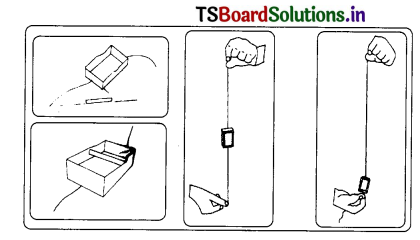
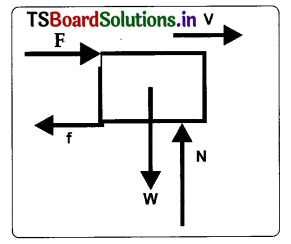
![]()
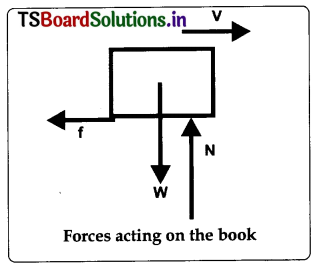
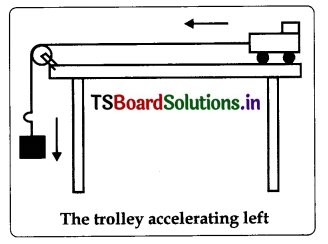
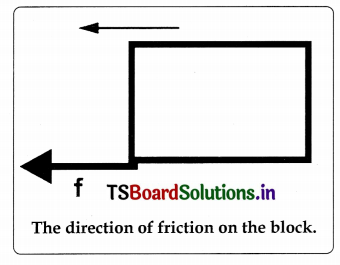

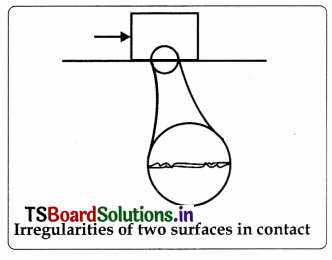




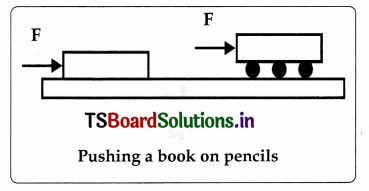
![]()
![]()
